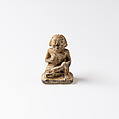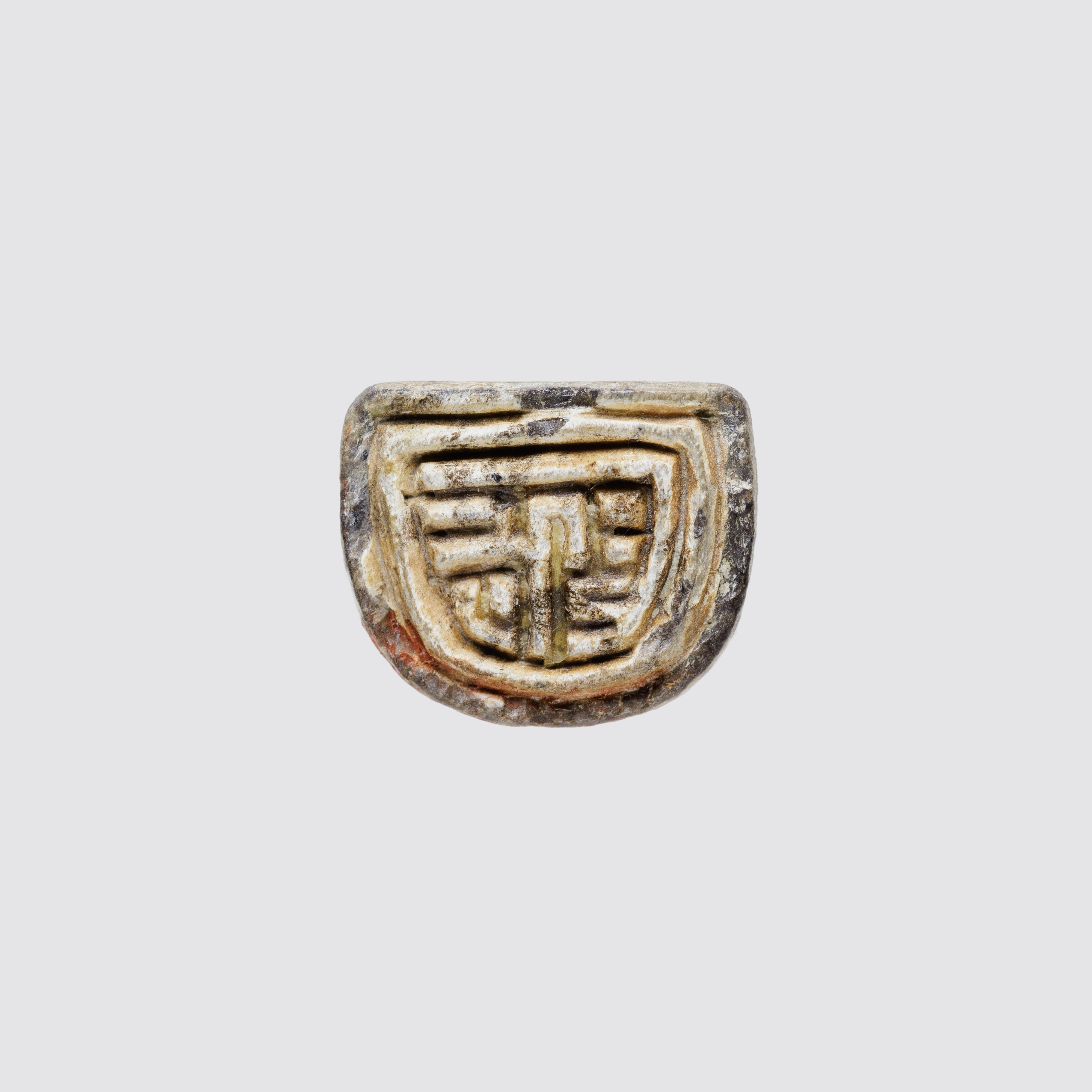Design Amulet, Woman Suckling a Child on Back, Device showing Geometricized Monkeys
First Intermediate Period
Design amulets from the late Old Kingdom and First Intermediate Period, also called button seals or figure seals according to their form, were at least in some instances used as seals. They seem overwhelmingly, however, to show devices (base decoration) and combinations of figural backs and base decoration that are clearly amuletic in nature; moreover, at least at Qau, they came mainly from the burials of women and children. Examples are preserved from tombs where they were buried with the dead, sometimes incorporated in strings of beads and amulets.
A recent study has cast considerable light on the motifs and their amuletic significance. For the design amulets with three dimensional figural backs, the backs and the device relate. Nursing mothers (with perhaps allusions to Isis who nursed and protected Horus) and the closely connected nurturing and nursing animals can be thought of as embodying positive wishes for the vulnerable young or the vulnerable dead. Monkeys can occupy the same register as their affectionate nurturing of their young is an already old motif in Egyptian art. But in addition, monkeys have connections with domestic gods like Bes and Taweret whose role is protective of mother and child, and they also have connections with the journey of the sun and regeneration, .
Due to rights restrictions, this image cannot be enlarged, viewed at full screen, or downloaded.
This artwork is meant to be viewed from right to left. Scroll left to view more.






